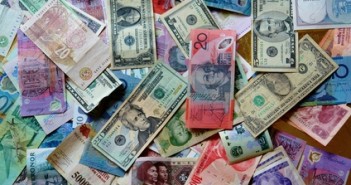Since the advent of paper money, there have been numerous examples of currency crises which have caught many investors off guard. In fact, some of the most dramatic examples have been in relatively recent times.
In 1994, for example, the Mexican Peso crumbled leaving it massively devalued and resulting in the country needing financial aid from the United States. Although there were many factors that caused the Peso to crash, ultimately it was the result of a contraction in Mexican economic growth and the emptying of the country’s foreign reserves. As the government overextended itself, traders feared that the country would default on its debt. There were warning signs at the time and Mexico’s current account deficit stood at 7% of GDP.
Guest post by FXTM
Then, in 1997, a similarly painful currency crisis occurred in Asia as many of the ‘tiger’ economies experienced a rapid withdrawal of ‘hot money’ and foreign investment.
Like the Peso, many of the Asian economies were supported by large amounts of foreign debt and when this was taken away there was the fear that large current account deficits for those countries would lead to government default; particularly among countries whose currencies were kept fixed.
Warning signs
To understand why a country may experience a currency crisis is no more difficult than looking at your own personal finance situation. If you have borrowed beyond your means, maxed out credit cards and have less coming in than going out, you are in financial peril.
In the same way, a country which relies too heavily on borrowed funds always faces the risk of being unable to pay off its debts. If something bad happens, such as a negative economic shock or a crisis in sentiment, that risk can be intensified and the nation’s currency is likely to suffer.
Deficits
One of the biggest warning signs of a full blown crisis then can be found in the current accounts of particular nations. A current account deficit essentially means that a country is spending more than it is receiving and economists generally regard current account deficits greater than 5, (as a percentage of GDP), to be unsustainable.
Uncertainty
As well as negative current account deficits, political instability and market sentiment can be a big driver when currencies are in danger. In 1994, for example, the stability of the Mexican peso, was thrown into further turmoil by the assassination of a presidential candidate. Anything that causes uncertainty is likely to lead to investors pulling their money out of a currency quickly and this will lead to a rapid depreciation in it’s value.
Overvalued
Another factor that can ultimately push a currency over the edge is if it has been significantly bought up in the first place. Currency moves typically take a long time to play out so that economies are better able to adjust to new pressures.
However, if a country’s exchange rate rises rapidly, those pressures may become exaggerated. Central banks try to adjust to the new environment quickly and may well do too much. The result is that the same speculators that bid the currency up in the first place will likely bid it down just as quickly.
